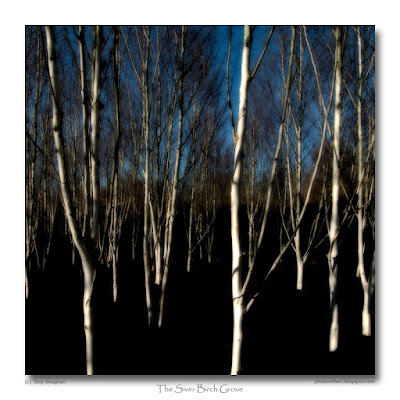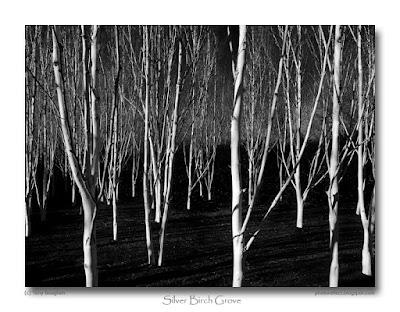 click photos to enlarge
click photos to enlarge
There's a saying amongst some photographers that an effect applied after shooting won't make a bad photograph into a good one. It's a maxim born of seeing too many images where HDR, selective colouring, starbursts, graduated colours and the like, are added for just that reason. Some purists go further and see any effect as an unwelcome addition, regardless of the quality of the original. I think that the originally stated case is largely true, but as for the idea that effects have no place in photography, well, I disagree. The fact is there are too many good photographers who prove the contrary.
Bill Brandt, the British photographer, is probably best known for those images to which he applied the effect of very high contrast. The U.S.-born Man Ray (Emmanuel Radnitzsky 1890-1976) was so fascinated with photographic manipulation that a significant part of his ouvre uses his "rayograph" technique or solarization. Other examples of the use of effects can be found in the work of eminent photographers past and present.
So, why are effects not widely used? Well, it depends on what you're trying to achieve with your images. Brandt is also known for his "documentary" style photographs of the working class in England's northern cities. In those images he mainly used traditionally exposed black and white photography of "normal" dynamic range. But, he's also known for pictures that lean towards the artistic side of photography, and here is where he uses high contrast - almost pure black and pure white in some instances. Man Ray come from the tradition of Dada, and painted as well as taking photographs. Consequently his portraits of notable people tend to be recognisably "normal" photographs, whereas his artistic abstracts use more unusual effects. Both photographers used effects where it contributed to what they wanted to achieve.
There is clearly a place for effects, though I tend to agree that over-use soon becomes tiresome, and makes you wonder why photography is the chosen medium as opposed to painting. I don't use such effects too often, but sometimes a subject tips me in that direction, as did this grove of bone-like silver birches. I've applied two effects to copies of the shot I took. I can't decide whether I prefer the "halo" effect" in colour, or the high contrast black and white. Each adds something to the original image that I find attractive. How about you?
photograph & text (c) T. Boughen
Camera: Olympus E510
Mode: Aperture Priority
Focal Length: 11mm (22mm/35mm equiv.)
F No: f7.1
Shutter Speed: 1/320
ISO: 100
Exposure Compensation: -0.7 EV
Image Stabilisation: On